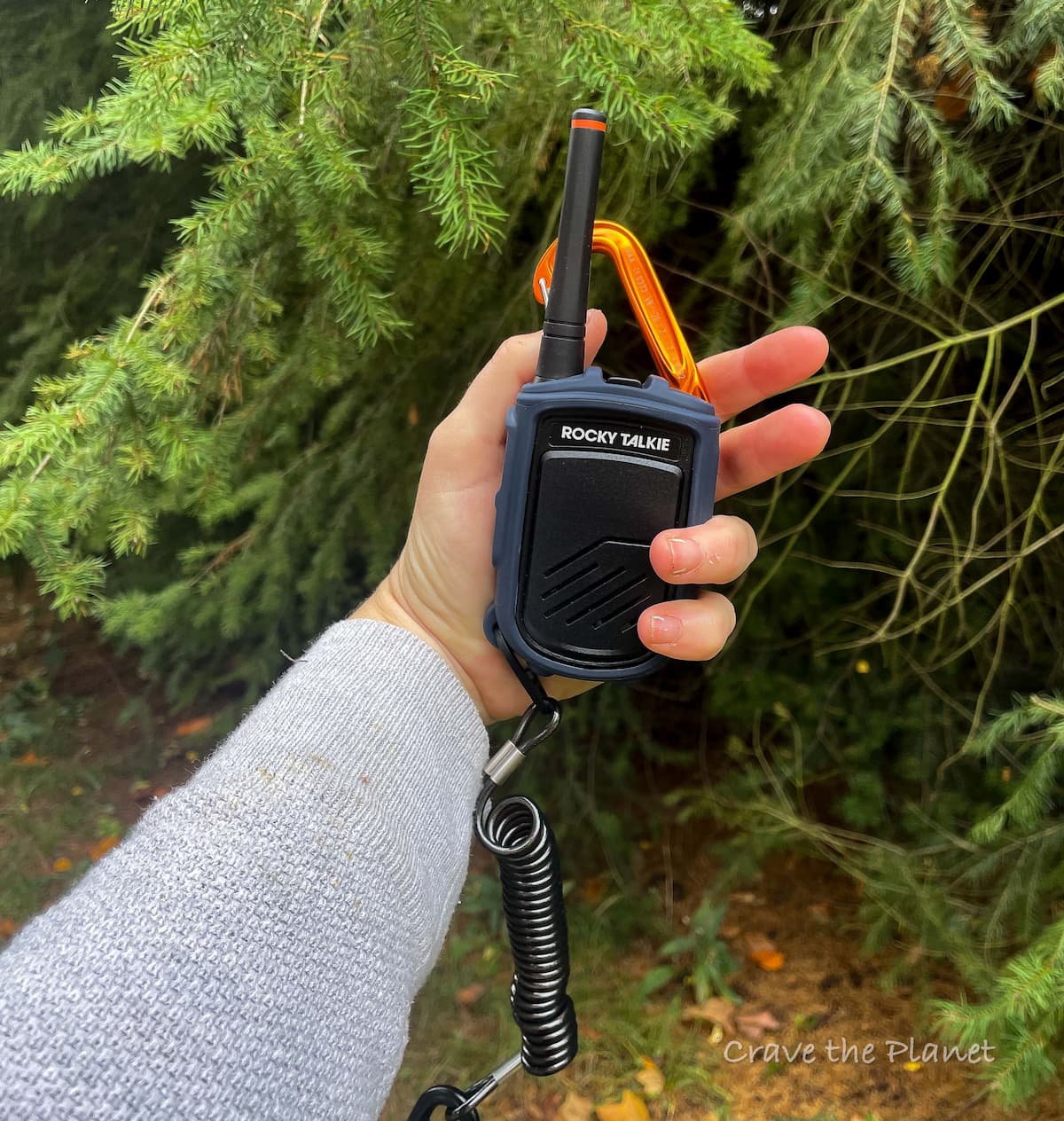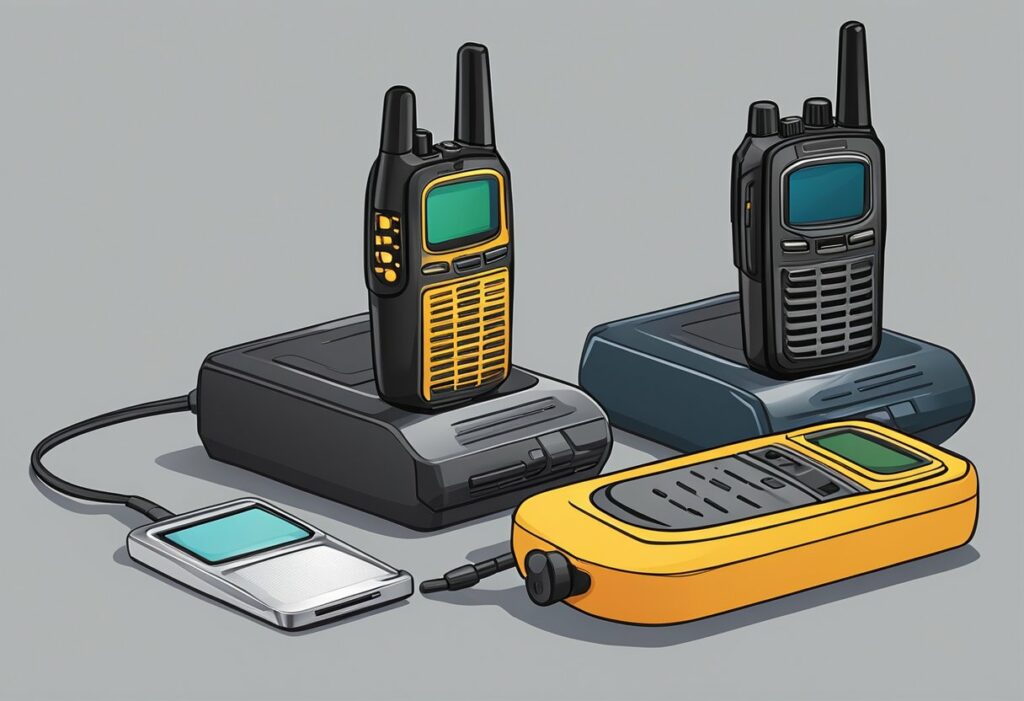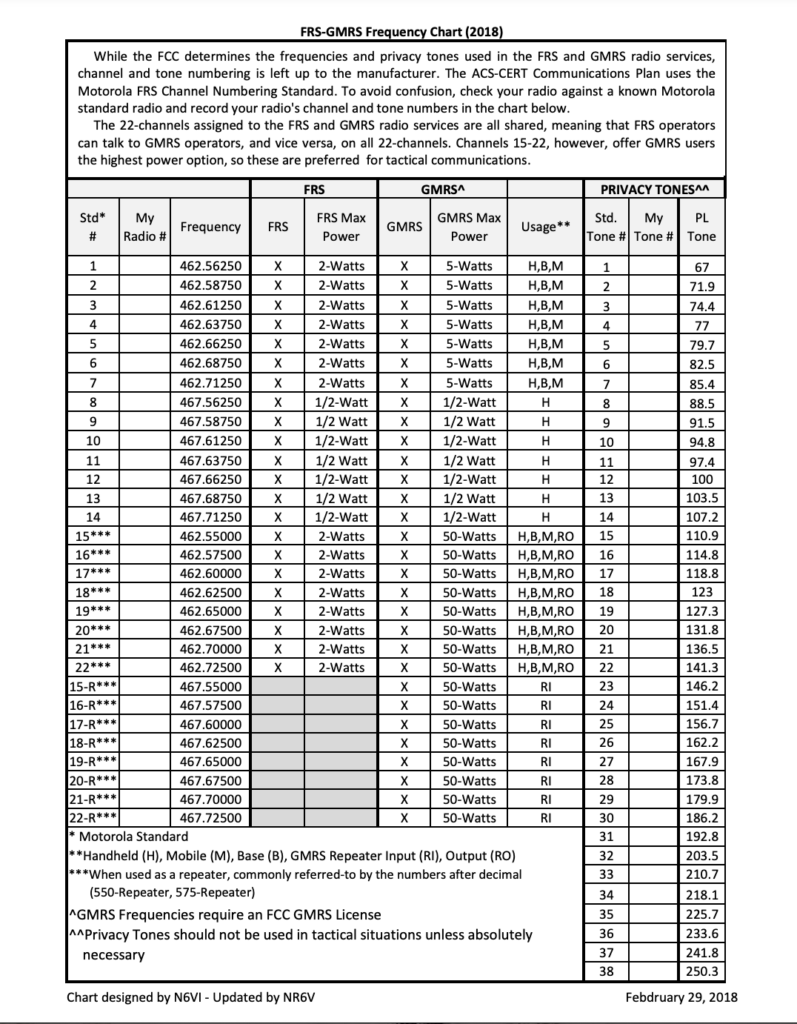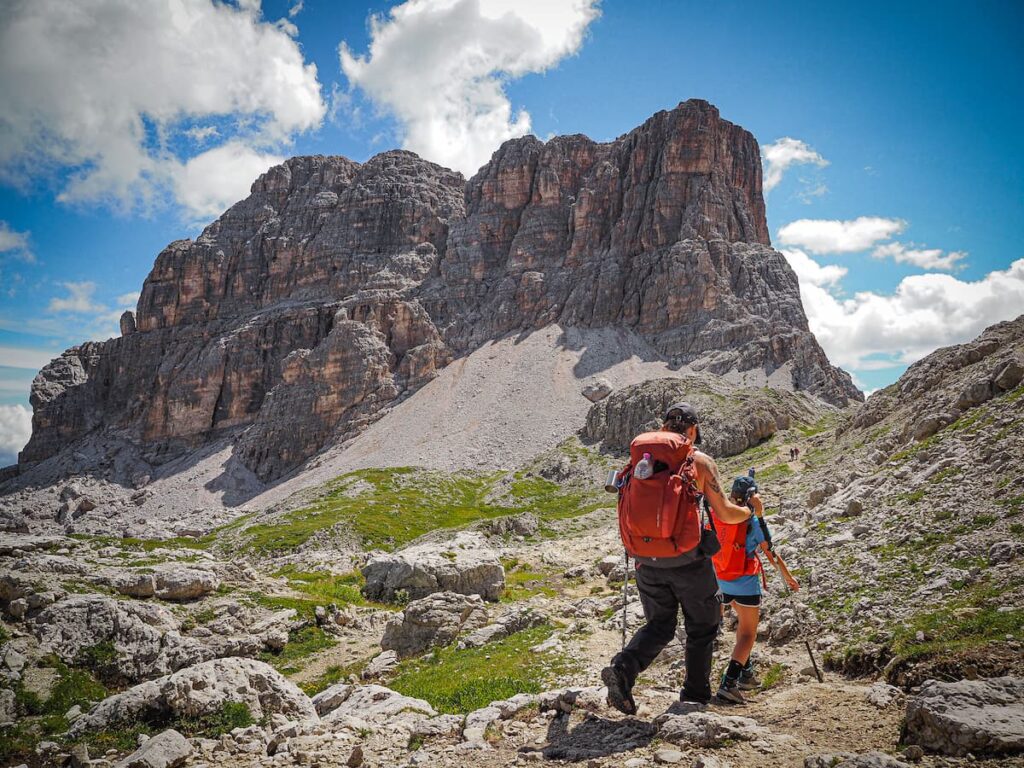Connecting is the whole point of spending time in the wild – But you can still connect to friends and family without your cell phone.
F that damn thing and welcome to the world of walkie talkies for skiing, hiking, hunting and more and I’ll help you choose what’s right for you.

How to Choose a Walkie Talkie for the mountains?
From my experience, when choosing a walkie-talkie for mountainous adventures, consider the following key points to ensure reliable communication:
- Range: Opt for a device with a long range, considering GMRS radios for their ability to use repeaters and higher power output, which can significantly extend coverage in rugged terrain.
- Durability: Look for robust, weather-resistant models that can withstand harsh mountain conditions, including rain, snow, and drops.
- Battery Life: Select a walkie-talkie with a long-lasting battery or the option to use replaceable batteries, so you’re not left without communication during extended trips.
- Features: Consider models with additional features such as GPS, emergency alerts, and hands-free operation, which can be invaluable during outdoor activities.
- License Requirements: Remember that GMRS radios require an FCC license, so plan accordingly if you choose this more powerful option.
By focusing on these aspects, you’ll be better equipped to select a walkie-talkie that meets the demands of mountain communication and enhances your safety on the trails.
1st: Which one to Pick: FRS vs GMRS Two-Way Radios
👉 Read my article on FRS vs GMRS radios, but there’s the short version:

- Highlight: Mammut Caribiner, EASY operation
- Price: Moderate
- Range: 2 watts, 1-5 miles (35 max, but not likely)
- FCC license: Not needed
Hikers and climbers, choosing the right communication tool for your outdoor adventures is crucial. FRS (Family Radio Service) radios are license-free, low-power devices perfect for short-range communication, such as day hikes or nearby climbing.
They operate on limited power and are best for casual, close-range use.
Wait, two-way radio vs walkie talkie? What’s the difference….
👉 Read my article on the difference between a walkie talkie and two-way radio , but there’s the short version:
- Walkie-talkies are a type of two-way radio primarily used for portable and personal communication.
- Usually, they operate on a limited number of pre-defined frequencies and have a shorter range.
- On the other hand, two-way radios can be either portable or stationary and often enable a broader range of frequencies for business or specialized use.
So from now on we’ll be talking about two-way radios...
For more demanding outdoor activities, GMRS (General Mobile Radio Service) radios offer a significant advantage with higher power and longer range.
They do require an FCC license, but this covers your entire immediate family. GMRS radios can also use repeaters to boost signal range, which is ideal for remote areas or long-distance communication in challenging terrain.
In essence, FRS is simple and hassle-free for short distances, while GMRS provides superior range and clarity for serious adventurers.
Ensure you’re using your devices legally and choose the service that best fits your communication needs in the wilderness.
2. How to get a GMRS License

This process isn’t that difficult but does take some time and money.
👉 Read my article on how to get a GMRS License, but there’s the short version:
Outdoor enthusiasts, if you’re looking to enhance your communication capabilities while adventuring in the great outdoors, obtaining a GMRS (General Mobile Radio Service) license is a smart move.
Why bother????
GMRS radios offer improved range and clarity over traditional walkie-talkies, making them ideal for keeping in touch with your group during remote hikes, camping trips, or any outdoor activity where cell service may be unreliable.
- The process of getting a GMRS license is relatively straightforward. You don’t need to pass any exams; instead, you simply apply for the license through the FCC (Federal Communications Commission).
The fee is modest, and once you have your license, it covers you and your immediate family, so everyone can stay connected on the same channel.
- With a GMRS license, you’ll have access to additional frequencies that are reserved for licensed users, which means less interference and more reliable communication.
Moreover, GMRS radios can be equipped with external antennas and repeaters, significantly extending their range. This can be particularly valuable in challenging terrain where communication is crucial for safety and coordination.
- By investing a little time and money to get a GMRS license, you’ll be equipping yourself with a powerful tool that enhances your outdoor adventures, keeping you and your loved ones safe and connected no matter where your journey takes you.
3. GMRS Radio Frequency Chart
👉 Read my article on the GMRS Radio Frequency Chart, but there’s the short version:
Understanding the GMRS radio frequency chart and channels is essential for maximizing the use of your communication devices in the great outdoors.

GMRS radios provide access to a series of designated channels within the UHF (Ultra High Frequency) spectrum, specifically between 462 and 467 megahertz.
These frequencies are shared with the FRS (Family Radio Service), but GMRS users benefit from higher power allowances, which can lead to greater range and clearer signals.
This made me think…
This is particularly important when you’re navigating through challenging terrain or if you’re separated from your group by considerable distances.
For those of you scaling heights or traversing long trails, knowing which channels to use and how to operate your GMRS radio within the legal requirements is key.
- Channels 1-7 and 15-22 are available for GMRS use, with channels 8-14 being reserved exclusively for FRS.
- It’s also important to note that some channels have power restrictions, and the use of repeaters on channels 15-22 can further extend your communication range.
Final Verdict – Best 2 way Radios for the Mountains
Rocky Talkie Mountain Radio
Lightweight
Simple Design
Made for the Mountains
The Rocky Talkie Mountain Radio features a heavy-duty ABS plastic construction that is weather-resistant from dust, rain and impacts. The USB C charger will get your lightweight walkie talkie charged for 4 days of normal use.
- Simple design
- Designed by climbers and skiers for the outdoor set
- 25 mile range - 1.5 miles in backcountry
- Not for people that want a lot of bells and whistles
- Pricey
Craving a Hut to Hut Hiking Adventure?

Hut to Hut Hiking in the Dolomites Free Course
Curious about hut-to-hut hiking in the Dolomites, but not sure where to start or what to expect? Sign up for our newsletter that simplifies and educates so you can focus on the views and vino. Get curious, get ready, and let’s get started! Sign up here👇🏼
- Free Email Course to Learn : Everything You Need to Know About Hut to Hut Hiking
Thanks for reading this rundown on how to choose a walkie talkie for the mountains and I hope it helps you prepare for your next adventure without the distractions.

Author profile: Morgan Fielder is a Doctor of Physical Therapy and passionate hiker who believes in exploring the world on foot with good food. Follow her journey as she shares science-based hiking tips and advocates for sustainable tourism.

